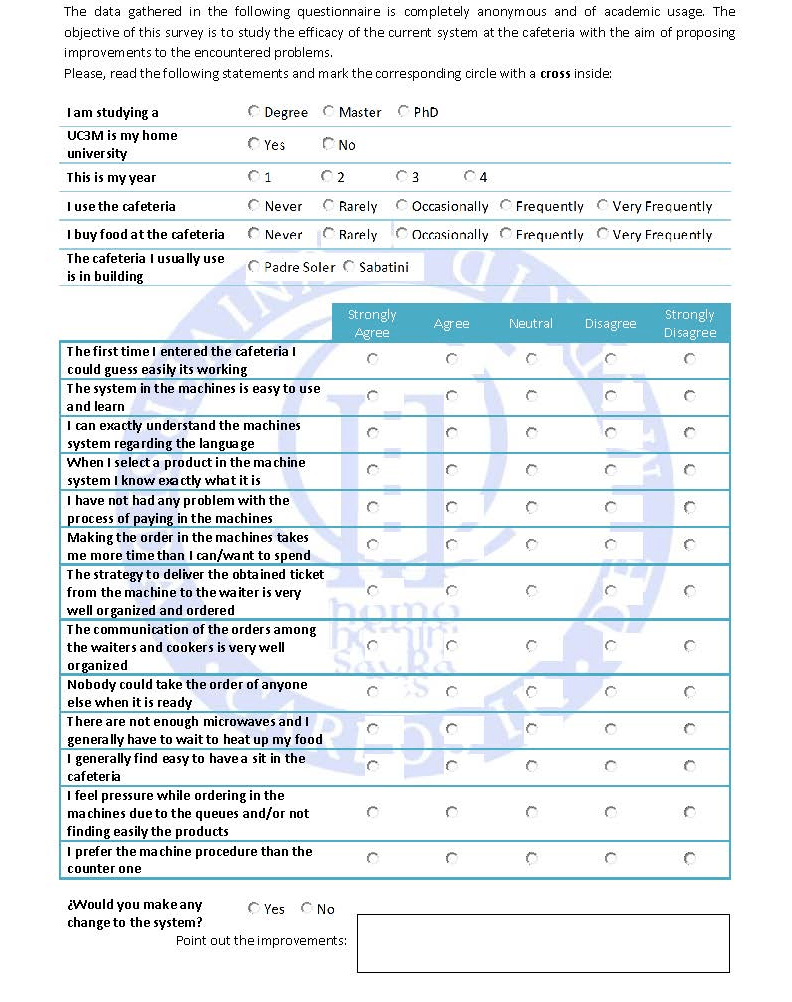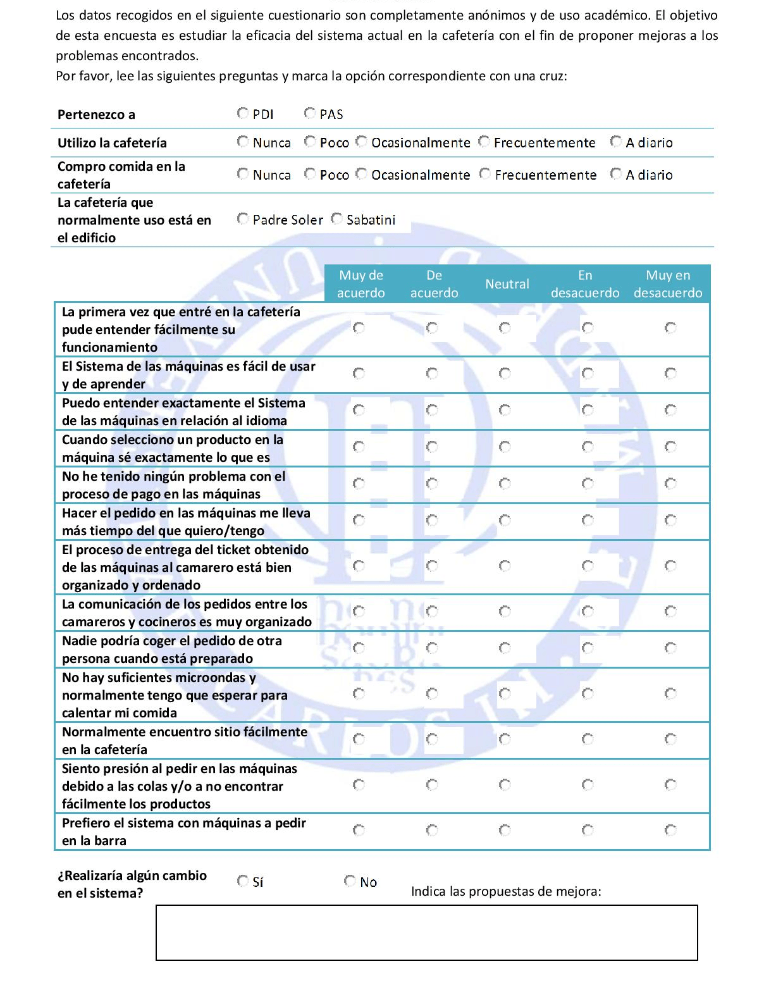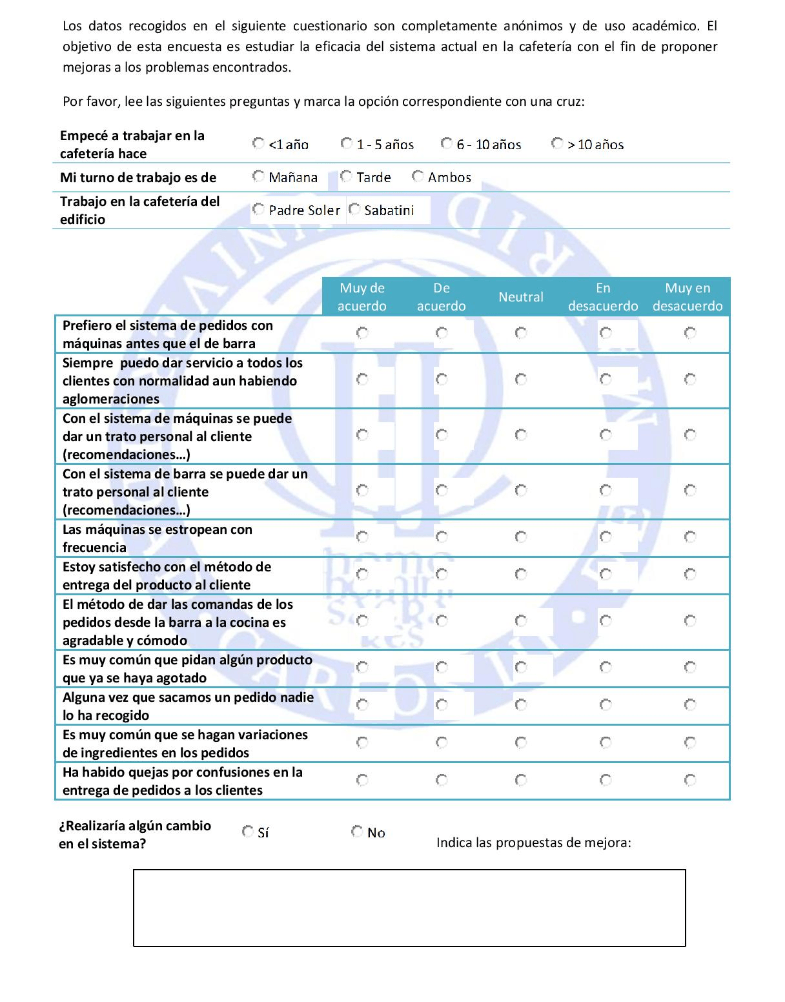Reasons
Questionnaires are cheap in terms of resources, easy to fill and easy to analyze.
Procedure
One different kind of questionnaire for each group of primary users was elaborated and they were asked to be filled during 3 days, from 10-12h and 13-15h at the cafeteria and classes context.
Structure
Header with a brief explanation of its purpose, the future usage for the gathered data and the steps to fill it.
Simple lists for 3-6 statements to gather demographic information (education, professional experience, frequency of use of the cafeteria…)
Five options likert-scale (from completely agree to completely disagree) for 11-13 statements regarding the current service
(how the systems are perceived, how the experience with the interaction is…). Affirmative and negative propositions are combined in order to avoid the
confirmation bias
A final open question for the user to suggest possible changes in the system





